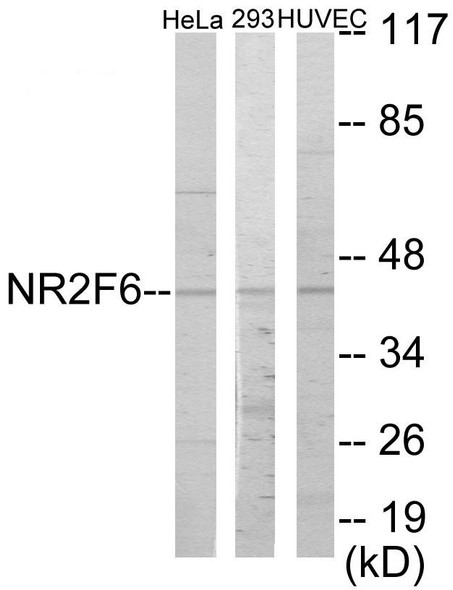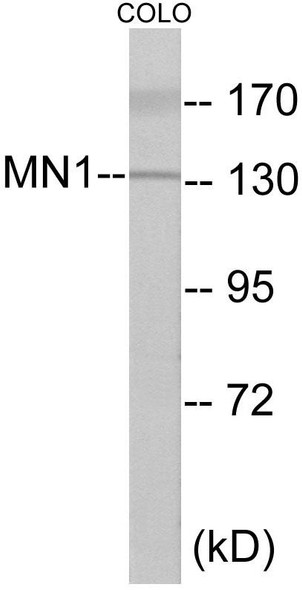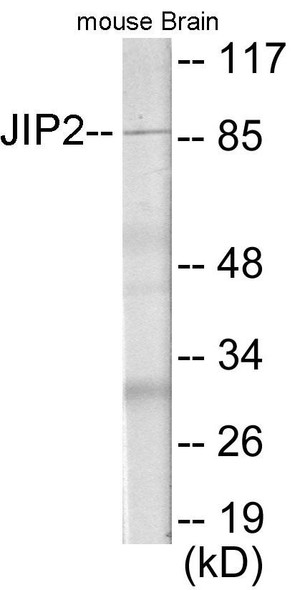Description
LAT3 Colorimetric Cell-Based ELISA
The LAT3 Colorimetric Cell-Based ELISA Kit is a cutting-edge assay designed for the precise measurement of LAT3 (L-type Amino Acid Transporter 3) levels in cell lysates and tissue homogenates. This kit offers exceptional sensitivity and specificity, ensuring accurate and reproducible results for a variety of research applications.LAT3 is a key transporter protein responsible for the uptake of essential amino acids in cells, playing a critical role in regulating cell growth, metabolism, and protein synthesis. Dysregulation of LAT3 has been implicated in a variety of diseases, including cancer, metabolic disorders, and neurological conditions, making it a valuable target for further investigation and drug development.
With its user-friendly protocol and reliable performance, the LAT3 Colorimetric Cell-Based ELISA Kit is an essential tool for researchers studying amino acid transport and its role in health and disease. Don't miss out on the opportunity to advance your research with this innovative and high-quality assay.
| Product Name: | LAT3 Colorimetric Cell-Based ELISA |
| Product Code: | CBCAB00949 |
| ELISA Type: | Cell-Based |
| Target: | LAT3 |
| Reactivity: | Human |
| Dynamic Range: | > 5000 Cells |
| Detection Method: | Colorimetric 450 nmStorage/Stability:4°C/6 Months |
| Format: | 96-Well Microplate |
The LAT3 Colorimetric Cell-Based ELISA Kit is a convenient, lysate-free, high throughput and sensitive assay kit that can detect LAT3 protein expression profile in cells. The kit can be used for measuring the relative amounts of LAT3 in cultured cells as well as screening for the effects that various treatments, inhibitors (ie siRNA or chemicals), or activators have on LAT3.
Qualitative determination of LAT3 concentration is achieved by an indirect ELISA format. In essence, LAT3 is captured by LAT3-specific primary antibodies while the HRP-conjugated secondary antibodies bind the Fc region of the primary antibody. Through this binding, the HRP enzyme conjugated to the secondary antibody can catalyze a colorimetric reaction upon substrate addition. Due to the qualitative nature of the Cell-Based ELISA, multiple normalization methods are needed:
| 1. | A monoclonal antibody specific for human GAPDH is included to serve as an internal positive control in normalizing the target absorbance values. |
| 2. | Following the colorimetric measurement of HRP activity via substrate addition, the Crystal Violet whole-cell staining method may be used to determine cell density. After staining, the results can be analysed by normalizing the absorbance values to cell amounts, by which the plating difference can be adjusted. |
| Database Information: | Gene ID: 8501, UniProt ID: O75387, OMIM: 603733, Unigene: Hs.591952 |
| Gene Symbol: | SLC43A1 |
| Sub Type: | None |
| UniProt Protein Function: | Sodium-independent, high affinity transport of large neutral amino acids. Has narrower substrate selectivity compared to SLC7A5 and SLC7A8 and mainly transports branched-chain amino acids and phenylalanine. Plays a role in the development of human prostate cancer, from prostatic intraepithelial neoplasia to invasive prostate cancer. |
| NCBI Summary: | SLC43A1 belongs to the system L family of plasma membrane carrier proteins that transports large neutral amino acids (Babu et al., 2003 [PubMed 12930836]).[supplied by OMIM, Mar 2008] |
| UniProt Code: | O75387 |
| NCBI GenInfo Identifier: | 311771737 |
| NCBI Gene ID: | 8501 |
| NCBI Accession: | NP_001185739.1 |
| UniProt Related Accession: | O75387 |
| Molecular Weight: | 61 KD |
| NCBI Full Name: | large neutral amino acids transporter small subunit 3 |
| NCBI Synonym Full Names: | solute carrier family 43 member 1 |
| NCBI Official Symbol: | SLC43A1 |
| NCBI Official Synonym Symbols: | LAT3; PB39; POV1; R00504 |
| NCBI Protein Information: | large neutral amino acids transporter small subunit 3 |
| UniProt Protein Name: | Large neutral amino acids transporter small subunit 3 |
| UniProt Synonym Protein Names: | L-type amino acid transporter 3; Prostate cancer overexpressed gene 1 protein; Solute carrier family 43 member 1 |
| UniProt Gene Name: | SLC43A1 |
| Component | Quantity |
| 96-Well Cell Culture Clear-Bottom Microplate | 2 plates |
| 10X TBS | 24 mL |
| Quenching Buffer | 24 mL |
| Blocking Buffer | 50 mL |
| 15X Wash Buffer | 50 mL |
| Primary Antibody Diluent | 12 mL |
| 100x Anti-Phospho Target Antibody | 60 µL |
| 100x Anti-Target Antibody | 60 µL |
| Anti-GAPDH Antibody | 60 µL |
| HRP-Conjugated Anti-Rabbit IgG Antibody | 12 mL |
| HRP-Conjugated Anti-Mouse IgG Antibody | 12 mL |
| SDS Solution | 12 mL |
| Stop Solution | 24 mL |
| Ready-to-Use Substrate | 12 mL |
| Crystal Violet Solution | 12 mL |
| Adhesive Plate Seals | 2 seals |
The following materials and/or equipment are NOT provided in this kit but are necessary to successfully conduct the experiment:
- Microplate reader able to measure absorbance at 450 nm and/or 595 nm for Crystal Violet Cell Staining (Optional)
- Micropipettes with capability of measuring volumes ranging from 1 µL to 1 ml
- 37% formaldehyde (Sigma Cat# F-8775) or formaldehyde from other sources
- Squirt bottle, manifold dispenser, multichannel pipette reservoir or automated microplate washer
- Graph paper or computer software capable of generating or displaying logarithmic functions
- Absorbent papers or vacuum aspirator
- Test tubes or microfuge tubes capable of storing ≥1 ml
- Poly-L-Lysine (Sigma Cat# P4832 for suspension cells)
- Orbital shaker (optional)
- Deionized or sterile water
*Note: Protocols are specific to each batch/lot. For the correct instructions please follow the protocol included in your kit.
| Step | Procedure |
| 1. | Seed 200 µL of 20,000 adherent cells in culture medium in each well of a 96-well plate. The plates included in the kit are sterile and treated for cell culture. For suspension cells and loosely attached cells, coat the plates with 100 µL of 10 µg/ml Poly-L-Lysine (not included) to each well of a 96-well plate for 30 minutes at 37°C prior to adding cells. |
| 2. | Incubate the cells for overnight at 37°C, 5% CO2. |
| 3. | Treat the cells as desired. |
| 4. | Remove the cell culture medium and rinse with 200 µL of 1x TBS, twice. |
| 5. | Fix the cells by incubating with 100 µL of Fixing Solution for 20 minutes at room temperature. The 4% formaldehyde is used for adherent cells and 8% formaldehyde is used for suspension cells and loosely attached cells. |
| 6. | Remove the Fixing Solution and wash the plate 3 times with 200 µL 1x Wash Buffer for five minutes each time with gentle shaking on the orbital shaker. The plate can be stored at 4°C for a week. |
| 7. | Add 100 µL of Quenching Buffer and incubate for 20 minutes at room temperature. |
| 8. | Wash the plate 3 times with 1x Wash Buffer for 5 minutes each time. |
| 9. | Add 200 µL of Blocking Buffer and incubate for 1 hour at room temperature. |
| 10. | Wash 3 times with 200 µL of 1x Wash Buffer for 5 minutes each time. |
| 11. | Add 50 µL of 1x primary antibodies (Anti-LAT3 Antibody and/or Anti-GAPDH Antibody) to the corresponding wells, cover with Parafilm and incubate for 16 hours (overnight) at 4°C. If the target expression is known to be high, incubate for 2 hours at room temperature. |
| 12. | Wash 3 times with 200 µL of 1x Wash Buffer for 5 minutes each time. |
| 13. | Add 50 µL of 1x secondary antibodies (HRP-Conjugated AntiRabbit IgG Antibody or HRP-Conjugated Anti-Mouse IgG Antibody) to corresponding wells and incubate for 1.5 hours at room temperature. |
| 14. | Wash 3 times with 200 µL of 1x Wash Buffer for 5 minutes each time. |
| 15. | Add 50 µL of Ready-to-Use Substrate to each well and incubate for 30 minutes at room temperature in the dark. |
| 16. | Add 50 µL of Stop Solution to each well and read OD at 450 nm immediately using the microplate reader. |
(Additional Crystal Violet staining may be performed if desired – details of this may be found in the kit technical manual.)






